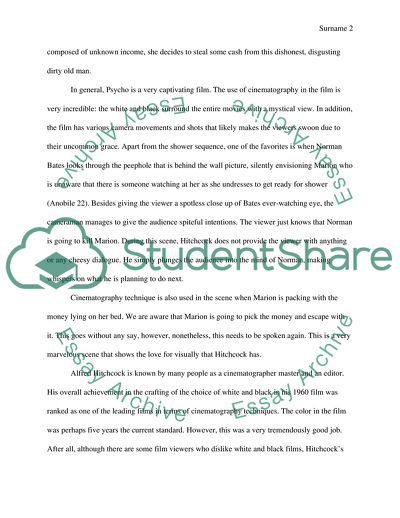Cite this document
(Cinematography in Psycho Essay Example | Topics and Well Written Essays - 1500 words, n.d.)
Cinematography in Psycho Essay Example | Topics and Well Written Essays - 1500 words. https://studentshare.org/visual-arts-film-studies/1862899-cinematography-of-psycho1960-by-alfred-hitchcock
Cinematography in Psycho Essay Example | Topics and Well Written Essays - 1500 words. https://studentshare.org/visual-arts-film-studies/1862899-cinematography-of-psycho1960-by-alfred-hitchcock
(Cinematography in Psycho Essay Example | Topics and Well Written Essays - 1500 Words)
Cinematography in Psycho Essay Example | Topics and Well Written Essays - 1500 Words. https://studentshare.org/visual-arts-film-studies/1862899-cinematography-of-psycho1960-by-alfred-hitchcock.
Cinematography in Psycho Essay Example | Topics and Well Written Essays - 1500 Words. https://studentshare.org/visual-arts-film-studies/1862899-cinematography-of-psycho1960-by-alfred-hitchcock.
“Cinematography in Psycho Essay Example | Topics and Well Written Essays - 1500 Words”. https://studentshare.org/visual-arts-film-studies/1862899-cinematography-of-psycho1960-by-alfred-hitchcock.


